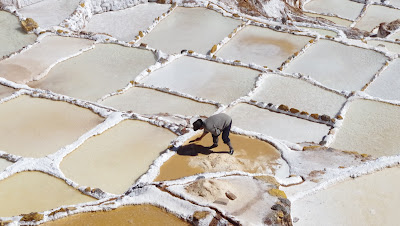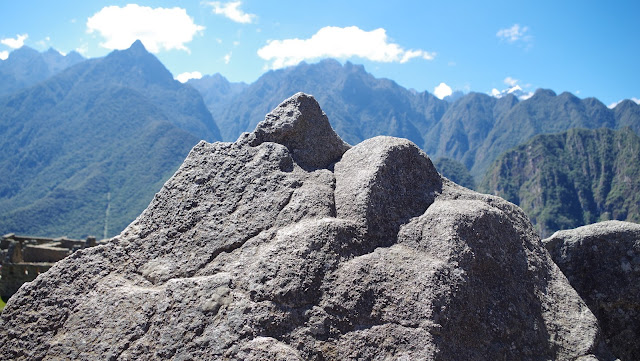Holy Peru Batman.So Many
Good Things.
Some things about Peru:
many houses on the outskirts of the city are made with clay and mud
clothing made from alpaca is sold on every corner of every street cause it is so incredibly cold
the last Incan was supposedly killed by the spanish in the main plaza of Cusco
there are too many children on the streets selling trinkets and sleeping in doorways of restaurants
the people that I've met so far are very hospitable and welcoming
People here love to party, dance, and stay out til the wee hours of the morn
Worm farm
This week
has been a whirlwind of one amazing adventure after another. I don’t know how
to fit all of it in, but… you know I’ll try.
If you
would have told me a month ago that I would be digging in the dirt at a
sustainable worm farm in the hills of Urumbamba Peru, I would have laughed at
your insanity.
Well look
who’s laughing now (still me) because that’s exactly what I did. With my class,
I drove by bus to the far stretching mountains beyond Cusco, to visit a
sustainable worm farm. Our humble host for the afternoon was a Californian
named Jeff. Jeff has been working on the farm for 18 years now and passion for
sustainability and the livelihood of the townspeople poured from him. He had four men working there with him on the
day we visited, who he employed from the local village. Regular visits from
school children will hopefully ensure that organic worm farming will carry on into the future and people will use less pesticides in their fertilizer. Our job was to help the men sort thru the
piles of soil that and pick out all the California Red Wigglers so they could go back to work in the next pile of dung. Did I mention
the soil used to be a huge pile of horse poo? Chyeah. But the sustainability of
the farm and the efficiency of the worms cut down any smell. It was virtually odorless.
I could not
complain about the location either. The landscape was phenomenal. The tall
Peruvian mountains had a likening to our Eastern Washington backdrop, but on a
grander scale. We had no bathrooms or running water. I used a Peruvian bush to
do my business behind. The only downfall was these darn mosquitos that bit the
crud out of my ankle leaving me swollen and red spotted for a week.
We worked
then shared a really nice picnic then headed on a cool walk around the
property. The changes in scenery were astounding. It felt dry like a desert in
the area we were working, but a beautiful river ran down the mountain supplying
the property with refreshing clean glacier water. Green trees lined the river
and we felt instantly hydrated. I made friends with the men working there and
they taught me phrases in Quechua, which I definitely cannot remember!
Quechua is
the second official language of Peru and it is not easily written. It is taught
in schools, but is a very difficult language to learn unless your family has
traditionally spoke it.
If you are
interested in making your own worm farm go here: http://www.tumbleweed.com.au/WormFarming/WormFarmingFAQs.aspx
Also, one
thing that struck me about these men I talked with. They were incredibly proud
to be Peruvian. “I am so thankful to be born in this country,” one said. That was a beautiful thing to me.
Salt mines
of Maras (Las Salinas De Maras)
“Pass the
salt.”
Salt is on
of the most important commodities of the world. The word “salary” actually
comes from the word “salt,” It’s that important!
We had an
amazing opportunity to visit the Salt mines of Maras, Peru. It is an
indescribable place (but I’ll try).
These mines
are located in the Sacred Valley. Two communities run the mines and they have
all been handed down generation after generation since Inca times. The mines
themselves are large salt lined shallow pits in the ground about 4 square meters.
Highly concentrated saltwater flows slowly into each pit. Workers take care to
maintain the amount of water going into each pit using rocks to block the flow.
With the evaporation of the sun salt is created and the farmer comes to mine
it.
The salt is
mined by men, women and children and sold in the local market, and really all
over the world. I spoke to a little girl
who worked there with her family and she talked to me for a few minutes about
the mines.
The Center for Traditional Textiles
Meet
Nilda. Nilda’s passion is to keep alive
the ancient art of textiles, to provide jobs for women in the community, and educate
children so this art form does not disappear in the future (and feed hungry volunteers that come to work in her shop- yes, that's guinea pig) . The center that we visited lay in the small
town of Chinchero.
The women, all very talented, ranged in age from very young, maybe 20 to 87.
They all had specific tasks to do, and that is what we came to help with.
We were
able to be a part of a 600-year-old dying process.
We started
with crushing roots using a rock and a piece of wood. Then boiling the
choppings in a huge vat of water heated by open fire. We put in the woven
alpaca and let it boil while one of us stirred with a huge stick. After a while
the dyes had set in and we had to remove the yarn from the boiling water using
huge sticks!
Then after
three water baths to remove sediment, the yarn was ready to dry.
We worked
at the workshop for hours until we were covered in stains from the dyes. Our hands
hurt, we couldn’t breath well from all the smoke and our muscles were sore from
moving around all the huge pots. The women that work there, and have worked
there for years, do this every day. It was amazing. And they love to do it. I
talked with many of the women and they told me about their designs and their
dresses. I played with their children and bought some of their art. These 118
women support their families by upholding the beautiful tradition of textile
weaving. Their work is beautiful and if you are interested in supporting their
organization by purchasing one of their many woven pieces check it out here: http://www.incas.org/center-for-traditional-textiles-of-cusco
Seminario
Ceramics
There once
was a man who lived in the hills of Urumbamba, Peru who lived in a shack with his
wife and his son. At home he would make little carvings or paintings and take
them to the street and try and sell them to tourists to make money to feed his
family. He says now with a grin speaking about his wife, “I don’t know how she put up with me for all
those years.” The man traveled to Cusco and asked to learn about the ancient art of clay
sculpting, pottery.
He learned
the techniques and what tools to use to perfection. Starting with
architecture and sculpting houses, now this man, Pablo Seminario, uses Peruvian red clay
and sculpts “what he feels like sculpting” and sells it all over the
world. His pieces are not native
contemporary art as they have been called; they are products of his
imagination. A beautiful imagination at that.
If you are
interested in clay art of Seminario Ceramics check it out here: http://www.ceramicaseminario.com/en/
Our tour
guide for the ceramic studio was Pablo’s son Kusi Seminario Behar.
Kusi discussed the way in which the clay was carefully sculpted and formed into the beautiful pieces in the gallery. The studio was awe-inspiring, compete with animals for petting (llama, turtle) and even parrots to ride on your shoulder while you are strolling through. The studio employs many people from the community, men and women. The men sculpt the clay while the women delicately paint the Inca designs of hummingbirds, flowers, fish, or the giver of life, the sun.
Kusi is also a very talented photographer, which as you can imagine,
sparked my interest. We chatted about photography, cameras,
locations, lenses, and people.
Please take
a minute to check out his photography
Chicha
Corn beer,
the staple beverage of Peru for hundreds of years. Chicha is made from sprouted and fermented corn and has been said to be the beverage handed to the Inca when making the long trek from Cusco to Machu Picchu at the Gate of the Sun. We were fortunate to stop on our drive out to Aguacalientes from Urumbamba to meet a family that has been making it for generations.
"Chicha Bar" it said in hand painted letters over the opening of the door. A shy middle aged woman welcomed us and invited in to sit and learn about the brewing process. Men of all ages sat around in the open spaces drinking and talking together. She told us how she is very careful and her "bar" is the cleanest around thanks to her mother's guidance, who passed down the recipe to her. She was right, the small room where we sat on little wooden benches was very clean. Vats of brewing chicha sat delicately covered with white linen.
I met her daughter who was just as shy as she was, but so giggly. I imagined how their life must be. They are the center of the community, where everyone gathers. Even children drink chicha because it only has about 1-2 % alcohol content. They were so happy to be there together and providing the space for passer-bys and towns people to sit and play games or chat about their lives.
Machu Picchu
I have waited a really long time to go to Machu Picchu. That sounds silly because I suppose someone would only wait as long as they waited until they went. What I mean to say is that through the years since I was a child, my interest and excitement about other cultures has grown. I told myself 3 years ago that I was going to make it possible for me to go to Machu Picchu.
I have done it. I am here. Being here cultivates my adult imagination. I dream of what it was like 500 years ago, the colors, the smells, the music and the people. I am not writing a lot in this section, I will just post photos, but come here, if you can, sit on the highest spot and look around at the beauty of the earth.






















































































































1 comment:
I love how you captured the amazing panoramic beauty of Machu Picchu and then had the micro photo of the spider - nature's wonders are everywhere! The rich colors of those textiles are incomparable. Just leaps right off my screen!
Post a Comment